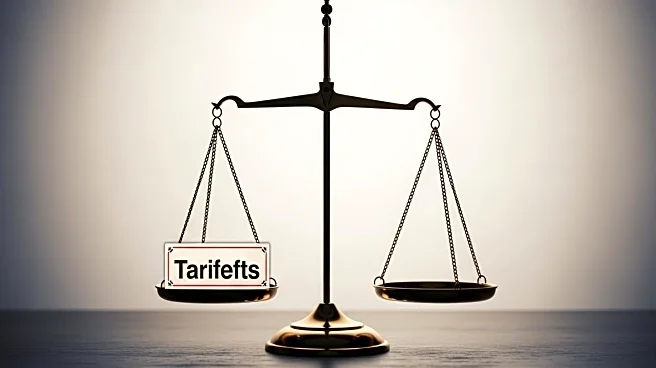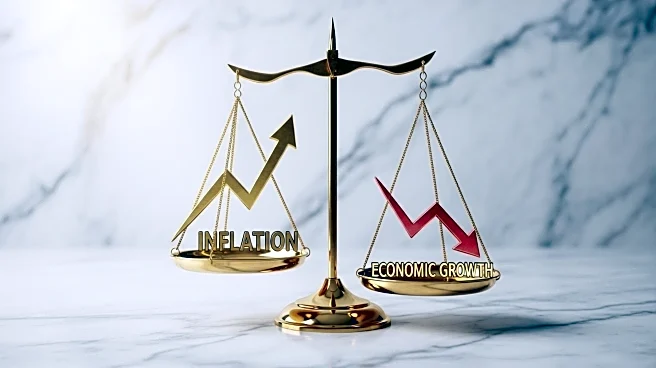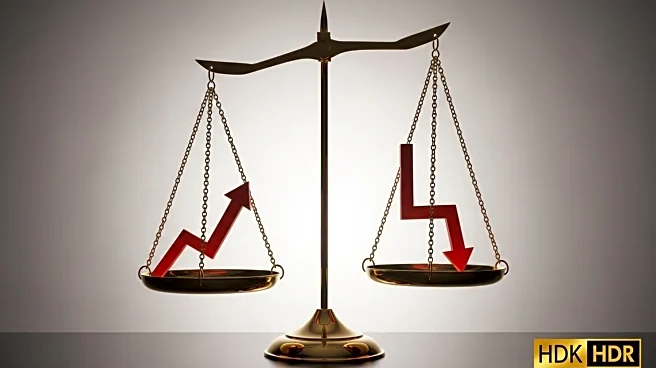What's Happening?
The Federal Reserve has cut its key interest rate by a quarter-point, shifting its focus from inflation to the labor market, which has seen a significant slowdown in hiring. This decision comes as jobless claims have retreated from a nearly four-year high, with applications for unemployment benefits falling by 33,000 to 231,000 for the week ending September 13. The rate cut aims to reduce borrowing costs for mortgages, car loans, and business loans, potentially boosting growth and hiring. However, inflation remains above the Fed's 2% target, posing a challenge to economic stability. Recent revisions by the Bureau of Labor Statistics indicate that U.S. employers added 911,000 fewer jobs than previously reported for the year ending March 2025, highlighting a weaker labor market than initially thought.
Why It's Important?
The Federal Reserve's rate cut is a critical move to address the slowing U.S. labor market, which has seen job gains tapering off. This decision could stimulate economic activity by making borrowing cheaper, encouraging businesses to invest and hire. However, the persistent inflation above the Fed's target raises concerns about the long-term effectiveness of this strategy. The labor market's weakness, exacerbated by President Trump's tariffs and unpredictable economic policies, has created uncertainty for businesses, potentially hindering hiring and expansion. The broader U.S. economic growth has slowed, with companies pulling back on projects due to tariff impacts, highlighting the need for effective policy measures to stabilize the economy.
What's Next?
The Federal Reserve's rate cut may lead to further monetary policy adjustments if the labor market does not show signs of improvement. Businesses and consumers could benefit from lower borrowing costs, potentially boosting spending and investment. However, the ongoing trade tensions and tariffs imposed by President Trump may continue to create uncertainty, affecting business confidence and hiring decisions. The final revisions of job gains by the Bureau of Labor Statistics, expected in February 2026, will provide a clearer picture of the labor market's health, influencing future policy decisions.
Beyond the Headlines
The Federal Reserve's decision to cut interest rates highlights the complex interplay between monetary policy and economic conditions. While the rate cut aims to support the labor market, it also underscores the challenges of balancing inflation control with economic growth. The revisions in job gains data reveal the impact of external factors, such as tariffs, on the labor market, emphasizing the need for comprehensive policy approaches to address economic uncertainties. The evolving economic landscape may require adaptive strategies to ensure sustainable growth and stability.











